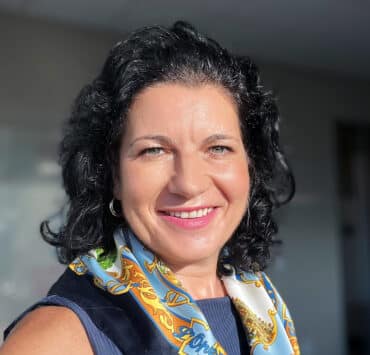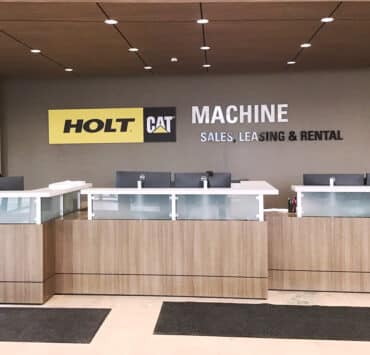|
Getting your Trinity Audio player ready...
|
As he approaches 31 years at Dallas Area Rapid Transit (DART), Darryl Spencer isn’t the least bit interested in reliving his greatest hits. The vice president of engineering and technical services simply has too much going on to take a moment to look back. A massive, nearly decade-long system modernization effort is propelling the future of DART riders and employees forward, and to convey the scope of this effort, Spencer pulled up a PowerPoint presentation during his interview with American Builders Quarterly.
That probably wouldn’t surprise Spencer’s colleagues, who are well aware of the VP’s attention to detail. “Darryl’s in-depth understanding of DART’s transit system infrastructure is essential as he champions revitalization of this legacy system and focuses the team on enhancing the overall experience of transit customers and DART employees alike,” says Chris Masters, senior program director at HNTB.
In February 2024, Spencer’s department underwent a mini realignment and reorganization to allow DART’s onboarding program management consultants to leverage supplemental resources so that project managers and division leaders can be more effective with their time.
They’re going to need every spare second they can get.
For Riders Now and in the Future
The anchor point of any transit system is its vehicles. DART has 163 vehicles in its light-rail fleet; 95 of those cars were placed in service in 1993.
“Those cars have approached their 30-year life cycle, and so right now we’re pulling together all of the technical requirements for proposal and beginning to solicit for replacements,” Spencer explains.
The 1996 starter rail system will be upgraded to include newer technologies that are apparent in two of DART’s newer rail lines. Unifying this system is far more complex than it sounds, and Spencer says it might be one of the tougher items on his to-do list.
Inside those cars, DART is replacing cloth seats with easily cleanable and hygienic vinyl. That effort is nearly finished. A similar effort was undertaken on all DART buses.
DART is working in partnership with Federal Transit Administration (FTA) funding to help replace over 500 buses in its fleet. The organization took possession of its first-ever 40-foot long-range battery electric bus that went into use in 2023. Spencer says that, ultimately, DART wants to achieve zero carbon emissions, and the electric vehicle (EV) bus is the first step toward achieving that goal.
Spencer says DART also wants to modernize bus information displays for passengers. The same goes for displays inside light-rail vehicles.
More broadly, DART has over 6,000 assets that equates to around $8 billion. Part of the system modernization effort has revolved around baselining those distinguishable assets and infrastructure to know exactly where the organization is before its pushes forward with where it’s going. The process has been a lengthy one, and that baselining is nearly completed.
Advertisement
Accommodating Snowmageddon and Beyond
Spencer is also focused on resiliency for a city whose weather has grown far more unpredictable over the years. Extreme weather events, like the “Snowmageddon” that crippled the Dallas area in 2022, have made it far more imperative to plan for the type of weather Texas has and may still encounter.
“We’re looking for solutions to combat the fallout from these weather events so we can fight our way through and keep service running,” Spencer says. “Our riders are healthcare workers and first responders, and they use our system religiously. We have to do whatever we can to keep these lines moving.”
DART has to relevel 23 of its train station platforms to accommodate the new design of low-floor, level boarding vehicles. Each stop must be raised by just seven inches, but the work required is extensive. The new car designs mean that the equipment currently on DART’s high-floor vehicles as designed will have to be relocated to the roof on the next generation vehicles, requiring rail maintenance facilities upgrades as well as crane equipment that moves the equipment.
These are all just ancillary parts of a much broader modernization effort, but every part is critical to ensuring the future of DART’s capabilities to get people where they need to go.
Stop Ahead
In driving these efforts, Spencer has employed some truly unique opportunities to bring his organization together. Prior to the reorg, Spencer was known for scheduling “field trips” for his entire department.
Spencer and his engineering team would ride the transit system, and from stop to stop, different members of the team would speak to active or completed projects they were working on.
“It would give face time to the rest of our team and demonstrate just how hard everyone was working,” Spencer explains. “They could point out locations or even things inside the bus they had helped bring to life. Every step of the ride would provide opportunities to demonstrate what they cared about and what they were accomplishing.”
Spencer says that especially since the COVID-19 pandemic, he’s more energized than ever to get riders back onboard. He says one of the proudest moments of his career was seeing the effort and collaboration of DART’s people in creating solutions for a situation the likes no one had ever seen. But now, it’s time to get riders back in bigger numbers.
“I’m just fortunate I haven’t had a moment to get bored here in 30 years,” Spencer says. “Innovation is always happening here, and I’ve gotten to be a participant in solving some very complex problems. I’m just looking ahead, and I hope to be part of more solutions.”
HNTB Corporation is an employee-owned infrastructure firm serving public and private owners and contractors. With 110 years of service, HNTB understands the life cycle of infrastructure and addresses clients’ most complex technical, financial and operational challenges. The firm delivers engineering and architectural services for airports, bridges, roadways, highways, tolling, transit, rail, planning, program/construction management and more to clients throughout North Texas and the U.S. Clients include the Dallas Area Rapid Transit, Texas Department of Transportation, Dallas/Fort Worth International Airport, North Texas Tollway Authority and others. For more information, visit www.hntb.com, or follow HNTB on LinkedIn, Twitter, Facebook or Instagram.


